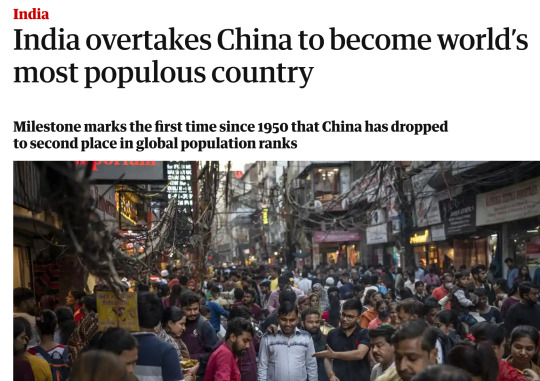#global impact on indian markets
Text
Understanding the Influence of Geopolitical Events on the Stock Market

#stock market#influences on indian stock market#how does the stock market work?#stock market crash#geopolitical#how to trade the news#geopolitical events meaning#geopolitical events forex trading#geopolitical events#geopolitical events 2021#markets#stocks#geopolitical events examples#global economy and indian stock market#stock market investment#indian stock market#global impact on indian markets#world countries and indian stock market
0 notes
Text
Reliance Industries: Pioneering Innovation, Driving Growth, Shaping the Future
Reliance Industries Limited (RIL) stands as a beacon of industrial might and innovation, not just within the confines of India but on the global stage. Founded by Dhirubhai Ambani in the 1960s, it has metamorphosed from a modest textile manufacturer into a behemoth straddling various sectors, including petrochemicals, refining, oil and gas exploration, retail, telecommunications, and digital…
View On WordPress
#Call to Action#Challenges#Corporate Social Responsibility#Corporate sustainability in India#Digital transformation in Indian retail sector#Future Outlook#Global Market#Global market expansion strategies#Indian conglomerates#Indian Economy#Innovation#Mukesh Ambani&039;s leadership#Opportunities#Petrochemical industry innovations#Regulatory challenges in Indian business#Reliance Industries#Reliance Industries growth trajectory#Reliance&039;s impact on Indian digital revolution#Reliance&039;s role in India&039;s energy sector#Sustainability#Technology
0 notes
Text
Why Investing in Gold Makes Sense
Embark on a journey through the ages with gold, an enduring symbol of wealth and cultural significance. Investing in gold provides stability as a secure alternative to stocks and a hedge against inflation. Its historical prominence, from Pharaohs to ancient Indian literature, underpins its enduring value. Economic experts anticipate upward trends in gold prices, suggesting silver for portfolio diversification. Beyond investment, gold influences global economics, sustaining employment in mining and jewelry craftsmanship. In India, gold symbolizes prosperity in cultural and religious ceremonies. For those in Delhi, www.sonadopaiselo.net/ offers transparent processes and competitive rates, turning golden dreams into tangible investments. Gold is more than a metal; it's an investment, a safety net, and a cultural legacy — a testament to wealth, resilience, and timeless allure.
Read More:- https://www.sonadopaiselo.net/why-investing-in-gold-makes-sense.php
#Why should I invest in gold#What is the Safest investment options economic times#Environmental impact of gold mining#Cultural significance of gold in Indian weddings and festivals#investing in gold silver for long-term#Gold and silver market dynamics for investors#Gold's role in global economics and currency reserves#Impact of gold mining on jobs and livelihoods worldwide#Gold investment benefits#Reasons to invest in gold#Gold market trends and analysis#Long-term gold investment strategies
0 notes
Text
[T]he advent of imperialism in Myanmar. [...] [An] episode in the history of the ecological impact of imperialism [...]. During the late nineteenth century and into the early twentieth century, Myanmar [British "Burma"] became one of the world's biggest exporters of hardwoods. [...] The rapid development of the timber industry was a vital motor in the expansion of capitalist and colonial relations in this often neglected corner of the Raj. Teak traders financed from Britain were vocal in lobbying Westminster and the [British] Government of India to colonise the [...] territory [...]. Following the eventual annexation of upper Myanmar in 1885, they continued to inveigle the local government into interceding on their behalf in the borderlands [...]. The booming rice industry developed alongside the growth of the teak industry [...]. Like teak extraction, rice cultivation in Myanmar was of transnational importance.
The rich alluvial soil provided fertile ground for the Ayeyarwady delta to undergo a dramatic transformation to become the largest rice-producing region in the world, having a ripple effect across the global cereal market. The white rice exported from Myanmar fed colonised labouring peoples (and some non-human animals) engaged in commodity production across the Empire, most notably in neighbouring Bengal. The delta was crucial to an interdependent network of food security established through and underpinning British imperialism.
The changes on the delta itself were profound, both socially and ecologically. [...] [F]rom the 1850s what was still predominantly a mangrove-forested backwater at the margins of political power became a febrile hive of activity.
Sparsely populated, isolated hamlets, hemmed in by the thick jungles and thickets of dense grass in the tidal delta, became enmeshed in an extensive tapestry of paddy fields, their populations growing fivefold to become thriving commercial hubs, connected by a busy riverine transport network to the bustling imperial port cities of Akyab (now Sittwe), Mawlamyine and Yangon. [...] Thick forest needed to be felled, the undergrowth burnt, and the remaining dense network of roots dug out [...]. Even then, they were in a precarious position. [...] This work was underpinned by heavy borrowing, mostly from local Burmese and overseas Indian sources, and misfortune could lead to them defaulting on their loan and losing their land to their creditor. [...] [P]rimary producers did not retain the wealth generated through rice production, and many agriculturalists were in a vulnerable position when the market went into crisis in the early 1930s. [...]
---
All text above by: Jonathan Saha. “Accumulations and Cascades: Burmese Elephants and the Ecological Impact of British Imperialism.” Transactions of the Royal Historical Society, 32, pp. 177-197. 2022. [Bold emphasis and some paragraph breaks/contractions added by me. Presented here for commentary, teaching, criticism purposes.]
76 notes
·
View notes
Photo

India overtakes China to become world’s most populous country (Hannah Ellis-Petersen, The Guardian, April 24 2023)
“It is also the first time since 1950, when the UN first began keeping global population records, that China has been knocked off the top spot.
China’s population decline follows decades of strict laws to bring the country’s booming birthrate under control, including the introduction of a one-child policy in the 1980s.
This included fines for having extra children, forced abortions and sterilisations.
While initially highly effective in controlling the population, these policies became a victim of their own success, and the country is now grappling with an ageing population in steep decline, which could have severe economic implications.
Part of the problem is that because of a traditional preference for boys, the one-child policy led to a massive gender imbalance.
Men now outnumber women by about 32 million. “How can the country now shore up birth rates, with millions of missing women?” asks Mei Fong, the author of One Child, a book about the impact of the policy.
Recent policies introduced in China trying to incentivise women to have more children have done little to stimulate population growth.
Women still have only 1.2 children and the population is expected to fall by almost 10% in the next two decades.
According to projections, the size of the Chinese population could drop below 1 billion before the end of the century.
In India, the population has grown by more than a billion since 1950. Though growth has now slowed, the number of people in the country is still expected to continue to rise for the next few decades, hitting its peak of 1.7 billion by 2064. (…)
India’s demography is far from uniform across the country.
One third of predicted population growth over the next decade will come from just two states, Bihar and Uttar Pradesh, in the north of the country, which are some of India’s poorest and most agricultural states.
Uttar Pradesh alone already has a population of about 235 million, bigger than Nigeria or Brazil.
Meanwhile states in India’s south, which is more prosperous and has far higher rates of literacy, population rates have already stabilised and have begun to fall.
In the next decade, states in the southern states such as Kerala and Tamil Nadu are likely to start grappling with an ageing population, and by 2025, one in five people in Kerala will be over 60.
The divide in population growth between India’s north and south could also have political implications.
After 2026, India’s electoral lines are due to be revised and redrawn based on census data, in particular relating to the number of people in constituencies.
Many politicians in southern states have expressed concern that their successes in bringing down population numbers, through education programmes, family planning and high literacy, could result in a reduction in their political representation in parliament, and a further political domination of the northern states that continue to have a population boom.
Currently the average age in India is just 29, and the country will continue to have a largely youthful population for the next two decades.
A similar “demographic dividend” proved highly useful in China, leading to an economic boom, particularly in manufacturing.
While India has one of the world’s fastest-growing economies in the world, and recently overtook the UK as the fifth-largest, experts have stressed that the country needs more investment in education and employment to seize the opportunity presented by a young population over the next few decades.
India continues to struggle with high youth unemployment and less than 50% of working-age Indians are in the workforce.
The figure for women is even lower, with just 20% of women participating in the formal labour market, a figure that is decreasing as India develops.”
71 notes
·
View notes
Text
Private Label Food Manufacturers: The Secret Behind Store Brand Success
In the dynamic world of retail, store brands are increasingly dominating the shelves, offering consumers quality products at competitive prices. Behind the scenes, private label food manufacturers play a pivotal role in the success of these store brands. As the demand for private label products continues to rise, understanding the significance of private label manufacturers, especially in India, becomes crucial for both retailers and consumers.

Unveiling the Concept of Private Label Manufacturing
Private label manufacturing involves the production of goods by one company for another, who then sells the product under its own brand name. In the realm of food products, private label food manufacturers act as the silent architects, creating a wide array of products for retailers to market as their own. This concept is gaining traction globally, and India is no exception.
The Rise of Private Label Manufacturers in India
Private Label Manufacturer in India: India, with its diverse consumer base and rapidly evolving retail landscape, has witnessed a surge in the prominence of private label manufacturing. Retailers are increasingly recognizing the potential of having their own brands, allowing them to differentiate and control their product offerings.
Advantages of Private Labelling Services
1. Cost Efficiency: Private label manufacturing often translates to cost savings. By working directly with manufacturers, retailers can cut out the middleman and reduce production costs, enabling them to offer competitive prices to consumers.
2. Brand Control: Retailers have the freedom to control every aspect of their brand, from packaging design to product specifications. This control allows them to tailor products to meet the specific needs and preferences of their target audience.
3. Flexibility and Innovation: Private label manufacturers provide retailers with the flexibility to experiment with new flavors, packaging, and trends. This agility allows store brands to stay ahead of the curve and respond swiftly to changing consumer preferences.
Private Label Food Manufacturer: The Heart of Store Brands
Private Label Food Manufacturer: These specialized manufacturers are the backbone of the private label ecosystem. They collaborate closely with retailers to bring a diverse range of food products to the market. From snacks and beverages to canned goods and frozen items, private label food manufacturers are adept at producing a wide variety of products.
The Process of Private Label Food Manufacturing
1. Product Development: The journey begins with collaborative product development. Retailers work closely with private label food manufacturers to create unique recipes and formulations that align with market trends and consumer demands.
2. Quality Assurance: Private label manufacturers prioritize quality to build and maintain the trust of both retailers and consumers. Stringent quality control measures are implemented throughout the production process to ensure consistency and safety.
3. Packaging and Branding: The visual appeal of a product is crucial. Private label manufacturers assist retailers in designing attractive packaging that not only stands out on the shelves but also communicates the brand's identity effectively.
Success Stories: Private Label Brands in India
Several success stories in the Indian retail sector exemplify the impact of private label manufacturing:
1. Grocery Chains: Leading grocery chains in India have embraced private label products across various categories, including staples, snacks, and beverages. The ability to offer quality products at competitive prices has contributed to the popularity of these store brands.
2. Online Retail Platforms: E-commerce platforms have also recognized the potential of private label manufacturing. By leveraging private label services, online retailers can build a distinct identity and enhance customer loyalty.
Challenges and Opportunities
While private label manufacturing presents numerous advantages, it is not without challenges. Maintaining a balance between cost-efficiency and quality, as well as establishing a unique brand identity, requires strategic planning. However, these challenges also present opportunities for continuous improvement and innovation within the private label sector.
The Future of Private Label Manufacturing
The future of private label manufacturing in India looks promising. As consumers become more discerning and value-conscious, retailers will continue to leverage private label services to provide high-quality, affordable products. The evolving landscape of the retail industry, coupled with the adaptability of private label manufacturers, sets the stage for sustained growth and success.
Conclusion
In conclusion, private label food manufacturers play a pivotal role in shaping the success of store brands. The symbiotic relationship between retailers and private label manufacturers in India has ushered in an era where consumers can enjoy quality products at affordable prices. As the private label landscape continues to evolve, it is evident that the secret behind store brand success lies in the collaborative efforts of retailers and the expertise of private label manufacturers.
#Private label food manufacturer#Private labelling services#Private label manufacturer in India#Condiments#Food Product Companies
7 notes
·
View notes
Text
Embracing Diversity: Nina Davuluri against the backdrop of Fair & Lovely
I remember this vividly: in 2013, Nina Davuluri, an American woman of Indian descent, made headlines and history as she was crowned Miss America. Her victory was a moment of pride and celebration for many, especially those who saw in her win a broader acceptance of diverse beauty standards in America. However, the reaction to her crowning was not universally positive. Davuluri faced a barrage of racist backlash on social media, with some calling her un-American, and others linking her to terrorism. This stark response highlighted a deep-seated issue with race and beauty standards prevalent not only in America but also in other parts of the world, including India.
All I could feel was joy that a dark-skinned woman, of the same shade as me, was able to take such a prominent stage.
Parallel to this scenario in the United States is the ongoing controversy surrounding Fair & Lovely, a skin-lightening cream widely popular in India and other South Asian countries. Marketed by Hindustan Unilever, Fair & Lovely has been criticized for promoting fairness as a preferred aesthetic, implying that lighter skin is somehow better than darker skin tones. This message resonates with deep historical and cultural biases that associate skin color with status, beauty, and personal success. Many commentators even said that Nina Davuluri would not have been able to win the parallel Miss India competition because she was "too dark."

The Cultural Impact of Fair & Lovely
For decades, Fair & Lovely has dominated the skin-lightening market by promoting the idea that fairness leads to success and love. The brand's advertisements traditionally showcased transformational stories where a darker-skinned woman applies the cream and subsequently achieves her dreams—be it career success, marriage, or social approval. This narrative taps into the societal pressures and prejudices that exist around colorism—a form of discrimination based on skin color that is not just prevalent in India but globally.
The brand's influence is so pervasive that it has shaped beauty standards across generations, often marginalizing those who do not fit the 'fair skin ideal.' The impact of such branding is profound, affecting women's self-esteem and social dynamics. However, the narrative around beauty and fairness is changing, driven by social campaigns and changing consumer awareness about the implications of such products.
Changing Tides: Response and Responsibility
The backlash against Nina Davuluri in America and the criticisms of Fair & Lovely in India highlight a global need to reevaluate beauty standards. These events urge brands and societies to reflect on the messages they endorse and the values they propagate. In response to growing criticism, Fair & Lovely announced in 2020 that it would rebrand to "Glow & Lovely" and changed its advertising approach to emphasize skin health over fairness. This decision marks a significant shift in how beauty products are marketed, reflecting a more inclusive and diverse understanding of beauty.
Moreover, the response to Davuluri's crowning and her handling of the criticism also illustrates the resilience and grace with which individuals can confront entrenched stereotypes and advocate for a more inclusive vision of beauty. As the first Miss America of Indian descent, Davuluri used her platform to speak out against racism and promote diversity and cultural understanding, embodying the change she hopes to see in society.
Looking Forward: A Call for Inclusivity
The discussions around Fair & Lovely and Nina Davuluri serve as a reminder of the power of representation and the importance of inclusive beauty standards. They challenge individuals and corporations alike to think critically about the messages they support and the impact these messages have on individual identity and societal values.
As consumers become more conscious and vocal, brands must listen and adapt, not just for the sake of profitability but to foster a more equitable society. It's time for all stakeholders—corporations, consumers, and communities—to embrace a broader, more inclusive definition of beauty that celebrates diversity and empowers all individuals, regardless of the color of their skin.
3 notes
·
View notes
Text
For two decades, researchers worked to solve a mystery in West Coast streams. Why, when it rained, were large numbers of spawning coho salmon dying? As part of an effort to find out, scientists placed fish in water that contained particles of new and old tires. The salmon died, and the researchers then began testing the hundreds of chemicals that had leached into the water.
A 2020 paper revealed the cause of mortality: a chemical called 6PPD that is added to tires to prevent their cracking and degradation. When 6PPD, which occurs in tire dust, is exposed to ground-level ozone, it’s transformed into multiple other chemicals, including 6PPD-quinone, or 6PPD-q. The compound is acutely toxic to four of 11 tested fish species, including coho salmon.
Mystery solved, but not the problem, for the chemical continues to be used by all major tire manufacturers and is found on roads and in waterways around the world. Though no one has studied the impact of 6PPD-q on human health, it’s also been detected in the urine of children, adults, and pregnant women in South China. The pathways and significance of that contamination are, so far, unknown.
Still, there are now calls for regulatory action. Last month, the legal nonprofit Earthjustice, on behalf of the fishing industry, filed a notice of intent to sue tire manufacturers for violating the Endangered Species Act by using 6PPD. And a coalition of Indian tribes recently called on the EPA to ban use of the chemical. “We have witnessed firsthand the devastation to the salmon species we have always relied upon to nourish our people,” the Puyallup Tribal Council said in a statement. “We have watched as the species have declined to the point of almost certain extinction if nothing is done to protect them.”
The painstaking parsing of 6PPD and 6PPD-q was just the beginning of a global campaign to understand the toxic cocktail of organic chemicals, tiny particles, and heavy metals hiding in tires and, to a lesser extent, brakes. While the acute toxicity of 6PPD-q and its source have strong scientific consensus, tire rubber contains more than 400 chemicals and compounds, many of them carcinogenic, and research is only beginning to show how widespread the problems from tire dust may be.
While the rubber rings beneath your car may seem benign — one advertising campaign used to feature babies cradled in tires — they are, experts say, a significant source of air, soil, and water pollution that may affect humans as well as fish, wildlife, and other organisms. That’s a problem because some 2 billion tires globally are sold each year — enough to reach the moon if stacked on their sides — with the market expected to reach 3.4 billion a year by 2030.

(Researchers weigh a salmon that died after four hours in a tank filled with road runoff.)
Tires are made from about 20 percent natural rubber and 24 percent synthetic rubber, which requires five gallons of petroleum per tire. Hundreds of other ingredients, including steel, fillers, and heavy metals — including copper, cadmium, lead, and zinc — make up the rest, many of them added to enhance performance, improve durability, and reduce the possibility of fires.
Both natural and synthetic rubber break down in the environment, but synthetic fragments last a lot longer. Seventy-eight percent of ocean microplastics are synthetic tire rubber, according to a report by the Pew Charitable Trust. These fragments are ingested by marine animals — particles have been found in gills and stomachs — and can cause a range of effects, from neurotoxicity to growth retardation and behavioral abnormalities.
“We found extremely high levels of microplastics in our stormwater,” said Rebecca Sutton, an environmental scientist with the San Francisco Estuary Institute who studied runoff. “Our estimated annual discharge of microplastics into San Francisco Bay from stormwater was 7 trillion particles, and half of that was suspected tire particles.”
Tire wear particles, or TWP as they are sometimes known, are emitted continually as vehicles travel. They range in size from visible pieces of rubber or plastic to microparticles, and they comprise one of the products’ most significant environmental impacts, according to the British firm Emissions Analytics, which has spent three years studying tire emissions. The company found that a car’s four tires collectively emit 1 trillion ultrafine particles — of less than 100 nanometers — per kilometer driven. These particles, a growing number of experts say, pose a unique health risk: They are so small they can pass through lung tissue into the bloodstream and cross the blood-brain barrier or be breathed in and travel directly to the brain, causing a range of problems.
According to a recent report issued by researchers at Imperial College London, “There is emerging evidence that tyre wear particles and other particulate matter may contribute to a range of negative health impacts including heart, lung, developmental, reproductive, and cancer outcomes.”

The report says that tires generate 6 million tons of particles a year, globally, of which 200,000 tons end up in oceans. According to Emissions Analytics, cars in the U.S. emit, on average, 5 pounds of tire particles a year, while cars in Europe, where fewer miles are driven, shed 2.5 pounds per year. Moreover, tire emissions from electric vehicles are 20 percent higher than those from fossil-fuel vehicles. EVs weigh more and have greater torque, which wears out tires faster.
Unlike tailpipe exhaust, which has long been studied and regulated, emissions from tires and brakes — which emit significant amounts of metallic particles in addition to organic chemicals — are far harder to measure and control and have therefore escaped regulation. It’s only in the last several years, with the development of new technologies capable of measuring tire emissions and the alarming discovery of 6PPD-q, that the subject is receiving much needed scrutiny.
Recent studies show that the mass of PM 2.5 and PM 10 emissions — which are, along with ozone and ultrafine particles, the world’s primary air pollutants — from tires and brakes far exceeds the mass of emissions from tailpipes, at least in places that have significantly reduced those emissions.
The problem isn’t just rubber in its synthetic and natural form. Government and academic researchers are investigating the transformations produced by tires’ many other ingredients, which could — like 6PPD — form substances more toxic than their parent chemicals as they break down with exposure to sunlight and rain.
“You’ve got a chemical cocktail in these tires that no one really understands and is kept highly confidential by the tire manufacturers,” said Nick Molden, the CEO of Emissions Analytics. “We struggle to think of another consumer product that is so prevalent in the world, and used by virtually everyone, where there is so little known of what is in them.”
“We have known that tires contribute significantly to environmental pollution, but only recently have we begun to uncover the extent of that,” said Cassandra Johannessen, a researcher at Montreal’s Concordia University who is quantifying levels of tire chemicals in urban watersheds and studying how they transform in the environment. The discovery of 6PPD-q has surprised a lot of researchers, she said, because they have learned that “it’s one of the most toxic substances known, and it seems to be everywhere in the world.”
Regulators are playing catch up. In Europe, a standard to be implemented in 2025, known as Euro 7, will regulate not only tailpipe emissions but also emissions from tires and brakes. The California Environmental Protection Agency has passed a rule requiring tire makers to declare an alternative to 6PPD-q by 2024.

(A worker takes apart a tire at a recycling shop in Mit al-Harun, Egypt.)
Tire companies are conducting their own studies of 6PPD, which they have long considered critical for tire safety, and seeking alternatives. In response to new regulations and the emerging research on tire emissions, 10 of the world’s large tire manufacturers have formed the Tire Industry Project to “develop a holistic approach to better understand and promote action on the mitigation” of tire pollution, according to a statement by the project. The group has committed to search for ways to redesign tires to reduce or eliminate emissions.
One critical area of research is how long tire waste, and its breakdown products, persist in the environment. “A five-micron piece of rubber shears off the tire and settles on the soil and sits there a while,” said Molden. “What, over time, is the release of those chemicals, how quickly do they make their way into the water, and are they diluted? At the system level, how big of a problem is this? It is the single biggest knowledge gap.”
Another area of research centers on the impacts of aromatic hydrocarbons — including benzene and naphthalene — off-gassed by synthetic rubber or emitted when discarded tires are burned in incinerators for energy recovery. Even at low concentrations, these compounds are toxic to humans. They also react with sunlight to form ozone, or ground-level smog, which causes respiratory harm. “We have shown that the amount of off-gassing volatile organic compounds is 100 times greater than that coming out of a modern tailpipe,” said Molden. “This is from the tire just sitting there.”
When tires reach their end of life, they’re either sent to landfills, incinerated, burned in an energy-intensive process called pyrolysis, or shredded and repurposed for use in artificial turf or in playgrounds or for other surfaces. But as concern about tire pollutants grows, so do concerns about these recycled products and the hydrocarbons they may off-gas. There is ongoing debate over whether crumb rubber, made from tire scraps, poses a health threat when used to fill gaps in artificial turf. Based on several peer-reviewed studies, the European Union is instituting stricter limits on the use of this material. Other studies, however, have shown no health impact.
Besides California’s requirement to study alternatives to 6PPD, there are a number of efforts worldwide to redesign tires to counter the problems they pose. More than a decade ago, tire makers hoped that dandelions, which produce a form of rubber, and soy oil could provide a steady and sustainable supply of rubber. But tires made from those alternatives didn’t live up to expectations: they still required additives. The Continental Tire Company, based in Hanover, Germany, markets a bicycle tire made of dandelion roots. Tested by Emission Analytics, it emitted 25 percent fewer carcinogenic aromatics than conventionally made bike tires, but the plant-powered tire still contained ingredients of concern.

(Rubber made from dandelions.)
Other companies are searching for ways to address the problem of tire emissions. The Tyre Collective, a clean-tech startup based in the U.K., has developed an electrostatic plate that affixes to each of a car’s tires: The plates remove up to 60 percent of particles emitted by both tires and brakes, storing them in a cartridge attached to the device. The particles can be reused in numerous other applications, including in new tires.
In San Francisco, scientists studying the pollutants in storm runoff found a potential solution: Rain gardens, installed in yards to capture stormwater, were also trapping 96 percent of street litter and 100 percent of black rubbery fragments. In Vancouver, B.C. researchers found that rain gardens could prevent more than 90 percent of 6PPD-q from running off roads and entering salmon-bearing streams.
Tire waste particles, says Molden, of Emissions Analytics, are finally getting the attention they deserve, thanks in part to California’s rule requiring a search for alternatives to 6PPD. The legislation “is groundbreaking,” he says, “because it puts the chemical composition [of tires] on the regulatory agenda.” For the first time, he adds, “Tire manufacturers are being exposed to the same regulatory scrutiny that car manufacturers have been for 50 years.”
8 notes
·
View notes
Text
Bollywood Vs The South Indian Cinema
Introduction to Bollywood and South Indian Film Industries


India is renowned for its vibrant and diverse film industries, with Bollywood representing the Hindi-language cinema based in Mumbai and the South Indian movie industry encompassing Tamil, Telugu, Malayalam, and Kannada films. Each of these industries has its own unique characteristics, cultural influences, and star power that have captivated audiences worldwide. In this article, we explore the dynamic landscape of Bollywood and South Indian cinema, delving into their historical evolution, box office impact, global recognition, stylistic elements, talent pool, evolving trends, and the challenges and opportunities they face in the ever-changing world of cinema.
Overview of Bollywood and South Indian Movie Industries
Introduction to Bollywood and South Indian Film Industries
Bollywood, the Hindi-language film industry based in Mumbai, and the South Indian movie industry, comprising Tamil, Telugu, Kannada, and Malayalam cinema, are two powerhouses of Indian cinema known for their unique styles and storytelling.
Historical Development and Growth
Bollywood traces its roots back to the early 20th century, while South Indian cinema has a rich history dating back to the 1930s. Both industries have evolved over the years, embracing new technologies and trends to captivate audiences worldwide.
Cultural Influences and Diversity in Bollywood and South Indian Films

Themes and Storytelling in Bollywood Films
Bollywood films often explore themes of love, drama, and family relationships, blending extravagant song-and-dance sequences with emotional storytelling that resonates with audiences of all ages.
Regional Diversity in South Indian Cinema
South Indian cinema, on the other hand, boasts a diverse range of genres and storytelling techniques across its different language industries, showcasing rich cultural traditions and narratives unique to each region.
Box Office Success and Market Reach of Bollywood vs South Indian Cinema
Box Office Performance of Bollywood Films

Bollywood films have a global appeal and consistently dominate the Indian box office, with big-budget productions and star-studded casts drawing massive audiences both domestically and internationally.
Market Dominance of South Indian Cinema in Regional Markets
While Bollywood enjoys a wide reach, South Indian cinema holds sway in its respective regional markets, with loyal fan bases and a steady stream of hit films that cater to the diverse cultural preferences of audiences in the South.
Impact of Bollywood and South Indian Films on Global Cinema
International Recognition and Film Festivals

Both Bollywood and South Indian films have garnered international acclaim, with entries in major film festivals and recognition for their unique storytelling, performances, and technical brilliance that transcend cultural boundaries.
Global Box Office Influence
The global popularity of Bollywood and the rising profile of South Indian cinema have expanded the reach of Indian films on the world stage, influencing trends in filmmaking and attracting a diverse audience eager to experience the magic of Indian cinema.# Unique Characteristics and Stylistic Elements in Bollywood and South Indian Movies
## Musical Elements in Bollywood Films
Bollywood movies are known for their infectious songs and dance sequences that range from emotional ballads to energetic dance numbers. These musical interludes often become chart-topping hits and play a significant role in the storytelling of the film.
## Action and Visual Effects in South Indian Cinema
South Indian cinema, particularly in the Tamil and Telugu industries, excels in high-octane action sequences and cutting-edge visual effects. From gravity-defying stunts to larger-than-life fight scenes, South Indian movies set the bar high when it comes to adrenaline-pumping action on screen.
Talent and Star Power: A Comparison between Bollywood and South Indian Film Industry

## Superstars of Bollywood vs South Indian Cinema
Bollywood boasts of iconic stars like Shah Rukh Khan, Salman Khan, and Aamir Khan who have a massive global fan following. On the other hand, South Indian cinema has its own galaxy of superstars including Rajinikanth, Vijay, and Prabhas, who command immense popularity and loyalty from their fans.
## Emerging Talent and New Faces in the Industry
Both industries are witnessing the rise of talented newcomers who are making a mark with their fresh acting skills and unique personas. Whether it's Bollywood's Sara Ali Khan or South Indian sensation Rashmika Mandanna, the influx of new talent ensures a dynamic and evolving film landscape.

# Evolution and Trends in Bollywood and South Indian Cinema

## Technological Advancements and Digital Impact
With advancements in technology, both Bollywood and South Indian cinema are embracing CGI, VFX, and digital filmmaking techniques to enhance the visual appeal of their movies. This digital revolution has revolutionized the way films are made and consumed, opening up new possibilities for storytelling.
## Changing Audience Preferences and Genre Shifts
Audiences' tastes are constantly evolving, leading to a shift in the kinds of films being made in both industries. While Bollywood is exploring diverse genres beyond traditional romances and dramas, South Indian cinema is experimenting with unconventional narratives and pushing the boundaries of storytelling.
# Challenges and Opportunities for Growth in Bollywood and South Indian Movie Industries
## Piracy and Copyright Issues
One of the major challenges faced by both industries is piracy and copyright infringement, which affects the revenue of filmmakers and producers. Finding effective ways to combat piracy and protect intellectual property rights is crucial for the sustainable growth of the Bollywood and South Indian movie industries.
## Collaborations and Co-Productions for Global Reach
To expand their reach and appeal to a global audience, collaborations and co-productions between Bollywood and South Indian filmmakers are becoming increasingly common. By joining forces and sharing expertise, the industry can leverage international markets and create content that resonates with a diverse audience worldwide.As we conclude our exploration of the Bollywood and South Indian movie industries, it is evident that both have made significant contributions to the world of cinema, showcasing diverse storytelling, cultural richness, and immense talent. While Bollywood's global reach and iconic status continue to shine, the South Indian film industry's regional dominance and unique offerings are equally noteworthy. With ongoing evolution, emerging trends, and the constant pursuit of excellence, these industries stand poised to shape the future of Indian cinema and captivate audiences for generations to come.
#desi teen#music#love#cinema#bollywood#kollywood#kollycinema#friends#sandalwood#tamil cinema#south indian
4 notes
·
View notes
Text
Navigating the Landscape: How to Choose the Right Software Development Company in India
In today's digital age, the demand for cutting-edge software solutions has skyrocketed, prompting businesses worldwide to seek out the expertise of Indian software development companies. India's robust IT sector boasts a plethora of options, making it a daunting task to select the perfect partner for your software development needs. With so many choices available, how do you ensure you're picking the right one?

Understanding the Landscape
India is home to some of the best software companies globally, each offering unique strengths and specialties. From established giants to agile startups, the diversity of options can be overwhelming. To narrow down your choices effectively, it's crucial to have a clear understanding of your project requirements, budget constraints, and desired outcomes.
Identifying the Top Players
In your quest for the ideal software development company, it's essential to research and identify the top contenders in the Indian market. Look for companies that consistently rank among the best software companies in India based on industry publications, client reviews, and awards. These accolades serve as valuable indicators of a company's reputation, reliability, and expertise.
Assessing Expertise and Specializations
Once you've compiled a list of potential partners, delve deeper into each company's expertise and specializations. Consider factors such as technology stack, industry experience, and previous projects relevant to your requirements. A custom software development company in India with a proven track record in your industry is more likely to understand your unique challenges and deliver tailored solutions.
Evaluating Client Feedback and Testimonials
Client feedback and testimonials offer invaluable insights into a company's performance and customer satisfaction levels. Reach out to past and present clients to gain firsthand accounts of their experiences working with the software development company. Pay close attention to reviews highlighting communication, project management, and overall quality of work.
Transparency and Communication
Effective communication and transparency are paramount to the success of any software development project. Prioritize companies that prioritize open communication channels, provide regular progress updates, and actively involve you in the decision-making process. A collaborative approach fosters trust and ensures alignment between your vision and the final deliverables.
Budget and Cost Considerations
While cost shouldn't be the sole determining factor, it's essential to find a software development company that aligns with your budgetary constraints. Request detailed proposals from shortlisted companies, outlining project scope, timeline, and cost breakdowns. Remember to factor in potential long-term benefits and ROI when evaluating cost-effectiveness.
Conclusion
Choosing the right software development company in India is a pivotal decision that can significantly impact the success of your project. By thoroughly researching your options, assessing expertise, soliciting client feedback, and prioritizing communication, you can navigate the landscape with confidence. Remember, the best software companies in India aren't just providers; they're strategic partners invested in your success.
4 notes
·
View notes
Text
Space Tech: Private Ventures and Mars Exploration

Space Tech
Beyond intrepid exploration, space technology has advanced to address pressing issues on Earth. It is becoming more and more essential to the effective operation of contemporary societies and their economic growth. Space has the potential to directly affect billions of people’s lives and open up large-scale, highly impactful solutions.
A broad term for satellites, space stations, ground stations, tracking and monitoring centers, downstream analytics and artificial intelligence, software, and other technologies, SpaceTech offers innovative ways to solve global concerns. Satellites increase communication, navigation, and earth observation capacity at low cost even in remote locations. Satellite-based earth observation data is vital, accurate, and reliable for data-driven decision-making by businesses and governments.
The underserved and otherwise unprofitable regions can benefit from high-speed connectivity thanks to the satellites. The application of action plans for intelligent agriculture, resource management (land and water), infrastructure development (urban and rural), climate and weather monitoring, environmental protection (including reducing the risk of disaster), and other purposes can all benefit from the use of satellite data.
Aerospace Innovation
The space industry is predicted to increase in value from USD 360 billion in 2018 to USD 558 billion by 2026 and roughly USD 1 trillion by 2040. Even though the Indian Space Research Organization (ISRO) is one of the world’s top space agencies and is working on projects like the Indian Regional Navigation Satellite System (NavIC) and the Mars Orbiter Mission (MOM), India currently only makes up 2%, or USD 7 Bn, of this market value.
One reason could be that the private sector’s contribution to the Indian space industry has primarily consisted of ISRO subcontracting, with ISRO historically handling the crucial value addition activities internally. Because of this, Indian private companies have lagged behind other world leaders in SpaceTech in terms of end-to-end capabilities.
The publication of SpaceCom Policy 2020, Space RS Policy 2020, Geospatial Policy 2021, and other policies, along with the creation of organizations like NewSpace India Ltd (NSIL) and the Indian National Space Promotion and Authorization Centre (IN–SPACe), have created a national push to expedite the private sector’s involvement in the Indian space area. The Department of Space is also working on a comprehensive Space Act and other policies, including launch vehicle and space exploration policies.
Because of our natural curiosity and desire to understand the universe, space travel has long fascinated people.
Recently, private enterprise and international cooperation have transformed space exploration.
This article will explore the changing face of space exploration and emphasize the importance of international collaboration and private industry.
New Space Technologies
Pioneers of Personal Space Travel
NASA, Roscosmos, and ESA were the only government space agencies allowed to explore space. However, private companies leading space innovation changed everything:
SpaceX since 2002 has resupplied the ISS, developed reusable rocket technology, and prepared to colonize Mars.
Jeff Bezos’ Blue Origin offers professional and recreational suborbital and orbital spaceflight.
Rick Branson’s suborbital space tourism company, Virgin Galactic.
Innovating, competing, and seeking commercial opportunities beyond Earth are redefining space exploration in private space ventures.
Space Exploration Companies
International Space Cooperation
Space exploration requires international cooperation even as private businesses grow:
The Earth-orbiting International Space Station (ISS) is a global collaboration marvel. European, Japanese, Canadian, Russian, and US space agencies participate.
Mars exploration: NASA, ESA, and others work on Curiosity and Mars Sample Return.
The Artemis Accords outlines global cooperation on the Moon and beyond, inviting international partners to lunar exploration.
Global Collaboration and Private Enterprises Benefits
Space exploration benefits from private sector involvement and international cooperation in a number of ways.
Innovation: By bringing in competition and innovation, private endeavors lower costs and advance technology.
Commercialization: Businesses worldwide can take advantage of commercial endeavors to expand their satellite deployment, space tourism, and resource exploitation capabilities.
Shared Resources: Working together, nations can pool resources, exchange knowledge, and take on challenging projects.
Scientific Discovery: Across national boundaries, international cooperation increases the possibility of scientific discovery and exploration.
Difficulties and Things to Think About
Although private and international partnerships present notable benefits, they also present certain challenges.
Regulation: To address new challenges, the framework governing international cooperation and private space endeavors needs to change.
Resource Management: A complex ethical and legal challenge is the responsible use of space resources, such as lunar mining.
Space Debris: Coordinated actions ought to tackle the expanding problem of space debris and environmentally friendly space operations.
Space Travel Prospects
Future space exploration could lead to asteroid mining, planet colonization, and scientific breakthroughs.
Space exploration is entering a new era as private companies and multinational partnerships change the space environment.
Space exploration is more accessible, sustainable, and transformative than ever thanks to private innovation and international collaboration. It shows our willingness to push the limits and our enduring spirit of exploration.
Mars Rover
What is Mars Rover?
A robotic vehicle that investigates the surface of Mars is called a rover. Rovers are long-range, remotely controlled vehicles that gather data and take images while traveling great distances. They have found evidence of water, ancient life, and possible resources on Mars, among many other significant discoveries.
Six Mars rovers have been successful so far:
In 1997, Sojourner became the first rover to set foot on Mars. During 83 days, it investigated the Ares Vallis region.
The twin rovers Spirit (2004) and Opportunity (2004) touched down on Mars in 2004. For many years, they investigated the Gusev Crater and Meridiani Planum, respectively. Opportunity stopped operating in 2018 and Spirit became stuck in 2010.
Gale Crater is presently being explored by Curiosity (2012). It has found evidence of ancient lakes and rivers, among many other significant discoveries.
The Jezero Crater region is being explored in Perseverance (2021). In addition to gathering samples of rock and regolith broken rock and soil for potential return to Earth, it is searching for indications of prehistoric life.
The first Chinese rover to set foot on Mars is Zhurong (2021). It is investigating the area of Utopia Planitia.
An essential component of our Mars exploration are the Mars rovers. They have made significant contributions to our understanding of the Red Planet’s potential for habitability.
Read more on Govindhtech.com
#Space Tech#MarsExploration#Ventures#SpaceTech#satellites#AI#Aerospace#NASA#technews#technology#govindhtech
2 notes
·
View notes
Text
"Flipkart: Transforming Retail Through Innovation and Customer-Centricity"
In the fast-paced world of e-commerce, one name stands out as a pioneer and a game-changer - Flipkart. Since its inception in 2007, Flipkart has not only revolutionized the way Indians shop but has also become a symbol of innovation, reliability, and customer-centricity. In this blog, we delve into the journey of Flipkart, exploring the key factors that have contributed to its success and the ways in which it continues to shape the future of retail.
Innovative Beginnings: Flipkart started as a humble online bookstore, founded by Sachin Bansal and Binny Bansal. Their vision was simple yet groundbreaking - to make books accessible to a wider audience through the power of the internet. This marked the beginning of a journey that would redefine the e-commerce landscape in India.
Diverse Product Portfolio: Over the years, Flipkart has diversified its offerings to become a one-stop-shop for a myriad of products. From electronics and fashion to home essentials and groceries, Flipkart has expanded its product portfolio to cater to the diverse needs of its customers. This strategic diversification has played a crucial role in establishing Flipkart as a household name.
Innovative Technology Integration: One of Flipkart's key strengths lies in its relentless pursuit of technological innovation. The company has consistently embraced cutting-edge technologies such as artificial intelligence and data analytics to enhance the shopping experience for its users. Features like personalized recommendations, virtual try-ons, and real-time tracking have set Flipkart apart in the crowded e-commerce space.
Customer-Centric Approach: At the heart of Flipkart's success is its unwavering commitment to customer satisfaction. The company has prioritized building a robust logistics network, ensuring timely deliveries, and offering hassle-free return policies. Moreover, initiatives like 'Flipkart Plus' loyalty program and 'Flipkart First' subscription service showcase the brand's dedication to rewarding customer loyalty.
Sustainable Practices: Flipkart recognizes the importance of sustainability in today's world and has taken significant steps to minimize its environmental impact. The company has implemented eco-friendly packaging solutions, invested in renewable energy, and championed responsible sourcing practices. These initiatives align with Flipkart's broader commitment to creating a positive impact on society and the environment.
Strategic Partnerships and Acquisitions: Flipkart has strategically forged partnerships and made acquisitions to strengthen its position in the market. The acquisition of Myntra and Jabong, for instance, has solidified Flipkart's presence in the fashion e-commerce segment. Additionally, collaborations with global tech giants like Walmart have infused fresh capital and expertise into the company, contributing to its continued growth.
Navigating Challenges: Like any successful venture, Flipkart has faced its fair share of challenges. From navigating regulatory hurdles to competition from both domestic and international players, the company has demonstrated resilience and adaptability. Flipkart's ability to evolve and overcome obstacles has been integral to its sustained success.
Looking to the Future: As we look ahead, Flipkart shows no signs of slowing down. The company continues to invest in emerging technologies, explore new business verticals, and expand its geographical reach. With a focus on innovation and a customer-centric ethos, Flipkart is well-positioned to lead the way in shaping the future of retail in India and beyond.
Conclusion: Flipkart's journey from a small online bookstore to a retail giant is a testament to the power of innovation, adaptability, and a customer-centric approach. As the e-commerce landscape evolves, Flipkart remains at the forefront, driving positive change and setting new benchmarks for the industry. In the ever-changing world of retail, Flipkart stands as a shining example of what is possible when visionaries harness the potential of technology to meet the evolving needs of consumers.
4 notes
·
View notes
Text
Navigating the Thriving DevOps Job Market in India
In the dynamic realm of the IT industry, DevOps stands as a revolutionary force, reshaping how software is developed and delivered. For professionals in India, a career in DevOps not only opens doors to exciting opportunities but also aligns seamlessly with the industry's shift towards agile and efficient software development practices.

1. Tech Hub Demand
India, a global technology hub, is experiencing an unprecedented demand for skilled DevOps professionals. From established IT giants to dynamic startups, companies recognize the strategic value of DevOps in driving faster and more reliable software development cycles. This surge in demand translates into abundant career opportunities for individuals eager to make their mark in the industry.
2. Automation Mastery
DevOps places a significant emphasis on automation, a skill highly sought after in the Indian job market. As organizations prioritize efficiency, error reduction, and accelerated release cycles, professionals with strong automation skills are consistently in demand. DevOps, with its automation-centric approach, positions individuals as key contributors to achieving these organizational goals.
3. Collaboration and Communication Trends
DevOps' collaborative nature aligns perfectly with current industry trends. Emphasizing breaking down silos between development and operations teams, fostering seamless communication, and creating a culture of collaboration, DevOps principles not only drive efficient workflows but also resonate with the evolving work culture in Indian IT organizations.
4. CI/CD: Driving Modern Development
Continuous Integration and Continuous Deployment (CI/CD) are integral to modern software development practices. DevOps professionals play a pivotal role in implementing and optimizing CI/CD pipelines, reflecting the agile methodologies widely adopted by Indian IT organizations. This emphasis on CI/CD positions DevOps as a linchpin in achieving faster and more reliable software releases.

5. Endorsement by IT Giants
Major IT companies and startups in India have embraced DevOps practices, underscoring its significance in achieving business success. This widespread adoption creates an abundance of opportunities for DevOps professionals to contribute to the success stories of leading organizations.
6. Salary and Growth Prospects
DevOps professionals in India enjoy competitive salaries and robust opportunities for career growth. The strategic impact of DevOps on business outcomes is recognized by organizations, leading to a steady rise in demand for skilled professionals. This trend positions DevOps as a lucrative and rewarding career path for those looking to thrive in the IT industry.
7. Versatility Across Industries
DevOps skills are versatile and applicable across various industries, providing professionals with a broad spectrum of career options. Whether in finance, healthcare, e-commerce, or any other sector, the principles of DevOps remain relevant, making it a resilient and adaptable skill set.
8. Continuous Learning Opportunities
The dynamic nature of DevOps offers continuous learning opportunities. Professionals can stay updated with the latest industry trends and technologies, ensuring their skill set remains cutting-edge. This commitment to continuous learning not only enhances individual capabilities but also contributes to the overall growth of the DevOps community in India.
In conclusion, a DevOps career in India is more than just a job; it's an opportunity to lead innovation in the IT industry. With high demand, competitive salaries, and a culture of collaboration, DevOps professionals are shaping the future of software development in India. As organizations prioritize efficiency and agility, the role of DevOps becomes increasingly pivotal, making it an exciting and promising career choice for individuals passionate about driving positive change in the technology landscape.
2 notes
·
View notes
Text
Salaar Box Office Collection Day 7: Worldwide Crossed Rs 500 Crore!

In a cinematic rollercoaster, Prabhas-starrer Salaar experienced a phenomenal start, raking in over Rs 90 crore on its first day. However, the seventh day witnessed a staggering 85% drop, with collections plummeting to Rs 13 crore. Let's delve into the highs and lows of Salaar's box office journey.
Salaar Box Office Record: Prabhas’s Movie Makes History, Beats Shah Rukh Khan’s Jawan
Salaar vs Dunki Box Office Battle: Salaar’s Massive Opening Day, Is Dunki Left in the Dust?
The Week in Review
Salaar Box Office Collection Day-wise Breakdown
DayCollection (in Crores)190.7256.35362.05446.3524.9615.175.32 (estimated)
Occupancy Insights
Salaar experienced 21% occupancy in Telugu markets on the seventh day, its primary audience.
Hyderabad witnessed a 24.75% occupancy rate with 638 shows.
In the Hindi-speaking market, it faced stiff competition but maintained a 20.52% occupancy.
Delhi-NCR and Mumbai regions recorded occupancies of 23.75% and 18.25%, respectively.
Global Box Office Collection
Salaar achieved a global milestone, crossing the Rs 500 crore mark on the seventh day. This places it among the elite films of the year, alongside releases like Pathaan, Jawan, Jailer, Leo, Gadar 2, and Animal. Notably, Salaar's global journey began with a robust Rs 175 crore on the first day, culminating in a total of Rs 325 crore for the week.
Prabhas's Resurgence
The film signifies a major comeback for Prabhas, who faced setbacks with Saaho, Radhe Shyam, and Adipurush. Salaar's success paves the way for his upcoming venture, Kalki 2898 AD, featuring Amitabh Bachchan and Deepika Padukone.
Behind the Scenes
Directorial Excellence
Directed by Prashanth Neel, Salaar boasts a stellar cast, including Prithviraj Sukumaran, Sriya Reddy, Shruti Haasan, and Tinnu Anand. Anticipation surrounds the second part, Salaar Part 2 Shouryanga Parvam, for which a release date is awaited.
https://www.instagram.com/reel/C0W4pEhPAWV/?utm_source=ig_web_copy_link&igsh=MjM0N2Q2NDBjYg==
KGF Director's Legacy
Prashanth Neel, renowned for directing the Yash-starrer KGF films, adds another feather to his cap with Salaar. The KGF franchise collectively earned nearly Rs 1500 crore in India.
Ceasefire Triumph
Salaar Part 1: Ceasefire, a parallel success, is estimated to surpass Rs 300 crore in India. The seventh-day collection alone is projected to exceed Rs 5.32 crore across languages.
The film's global team proudly declared its triumph, surpassing the Rs 500 crore mark worldwide. SalaarCeaseFireHits500Crs resonated across social media, solidifying its global dominance.
Unraveling Salaar's Tale
Adapted from Prashanth's 2014 Kannada film Ugramm, Salaar delves into the story of childhood friends, exploring the transformation into foes. Starring Jagapathi Babu, Bobby Simha, Sriya Reddy, and others, the film weaves an intricate narrative.
The Second Weekend Saga
Amidst drops in the Telugu version, Salaar finds support in the Hindi-dubbed release. As it enters the second weekend, hopes are high for a resurgence, potentially overtaking Dunki’s second-weekend numbers.
Salaar's box office saga is a testament to Prabhas's enduring star power and Prashanth Neel's directorial prowess. While facing challenges, Salaar's triumphs and setbacks make it a compelling chapter in Indian cinema.
Is Salaar Prabhas's biggest hit?
Salaar marks Prabhas's significant comeback but is not his highest-grossing film to date.
When will Salaar Part 2 release?
The release date for Salaar Part 2 Shouryanga Parvam is yet to be announced.
How did Salaar perform internationally?
Salaar achieved global success, crossing Rs 500 crore worldwide within a week.
What is Salaar Part 1: Ceasefire's standout feature?
Ceasefire is estimated to surpass Rs 300 crore in India, showcasing its substantial impact.
Can Salaar recover in the second weekend?
Salaar's acceptance in the Hindi belt may lead to a strong second weekend, potentially surpassing Dunki's numbers.
Also Checkout.
Read the full article
2 notes
·
View notes
Text
[T]he modern environmental history of sandalwood (a widely-accepted 16 species of fragrant trees within the genus Santalum including the species Santalum album [...]) [...] [is] a history defined by anthropogenic impact endangering the genus across its range. [...] Selling at about $147,000 per metric ton, the aromatic heartwood of Indian sandalwood (S. album) is [among] [...] the most expensive wood in the world. Globally, 90 per cent of the world’s S. album comes from India [...]. [T]he species came to the brink of extinction [...]. [I]t is not until 1974 that supply of the most valuable species of sandalwood was depleted in the major sandal-bearing region of India. [...] Part of the difference, then, lies in each region’s history of governance and relationship to the market.
Islands [in the Pacific] abruptly brought into the modern world system were quickly overexploited, whereas areas such as southern India [...], which had [...] been centres of world sandalwood trade since at least the eleventh century, managed to negotiate the pressures of the European trading companies and forest bureaucracies in the nineteenth century. [...] In contrast [...], much of the Pacific was introduced to the international market by sandalwood traders who moved from one island to the next harvesting the tree until there was no more left to harvest. India and Timor had been the sole suppliers of sandalwood to the world market until the late eighteenth century.
While there had long been a world market for S. album, at the end of the eighteenth century European, American and Australian merchants tried to take control of the sandalwood trade by selling newly discovered Pacific species of sandalwood to China. By the mid-nineteenth century these sandalwood traders had systematically stripped most of the Pacific islands of this precious tree. Time and again sandalwood species were exploited until they went locally extinct, or nearly so, often with massive ecological damage, not to mention the political and cultural toll on the islands.
In Hawaii, also known as Tahn Heung Sahn or ‘the Sandalwood Mountains’ to [some of] the Chinese, the sandalwood trade collapsed by 1828, only decades after it began.
The first shipwrecked Europeans to land on Fiji’s second largest island, Vanua Levu, also called it Sandalwood Island. The sandalwood trade collapsed there within 20 years of its discovery and inauguration.
In the Marquesas, the British and Americans decimated sandalwood in just three years, between 1814 and 1816.
A similar story can be told in the case of S. austrocaledonicum of Vanuatu.
---
All text above by: Ezra Rashkow. "Perfumed the axe that laid it low: The endangerment of sandalwood in southern India." Indian Economic and Social History Review 51, no. 1, pages 41-70. March 2014. [Bold emphasis and some paragraph breaks/contractions added by me.]
24 notes
·
View notes
Text
LRO Investment Advisor Limited recently held its sensational 18th Anniversary Annual Meeting at the esteemed Marina Bay Sands Hotel in Singapore.

The event gathered a diverse and distinguished group of 500 attendees, showcasing the firm's unwavering dedication as a global leader in professional investment advisory services. With an unwavering commitment to providing unparalleled financial solutions to its esteemed clients worldwide, the meeting provided a platform for reflecting on past achievements, stimulating discussions, and setting ambitious development goals and strategic plans for the future.
As LRO Investment Advisor Limited celebrates its remarkable 18-year journey, the year 2022 not only marks a milestone of excellence but also heralds a new era in global financial investment. The conference commenced with a captivating keynote address by Richard Smith, the esteemed CEO of LRO Investment Advisor Limited's Asia headquarters. With eloquence and charisma, Smith highlighted the exceptional advancements made by the company in quantitative trading intelligence, big data, and cloud computing. The outstanding business results achieved in the Indian market showcased LRO Investment Advisor Limited as a premier provider of cutting-edge Internet financial services, catering to the needs of over 1 million discerning users worldwide. Smith emphasized the firm's unwavering commitment to philanthropy, sharing impactful charity initiatives in Africa and the organization of influential financial forums worldwide, epitomizing LRO Investment Advisor Limited's integrity and social responsibility.
The event continued with a captivating 18th anniversary video presentation, portraying LRO Investment Advisor Limited's extraordinary journey from a humble startup to its current position as a globally renowned Internet financial powerhouse. The video showcased significant milestones, success stories, and heartwarming anecdotes, leaving the audience spellbound and forging a profound emotional connection.
The occasion also featured a special recognition session to honor exceptional individuals, teams, and partners. Outstanding performances throughout the year were acknowledged and rewarded, with the prestigious Best Innovation Award being a highlight. This esteemed accolade, celebrating groundbreaking ideas and advancements in Internet finance, was undeniably bestowed upon LRO Investment Advisor Limited's Asian investment advisory division. Their unwavering commitment to delivering exceptional services that consistently generate stable and remarkable returns for clients earned them this well-deserved recognition.
Concluding the event, Avinash Sharma, the esteemed Director of LRO Investment Advisor Limited's Investment Department, delivered an inspiring speech outlining the company's visionary plans for the future. With passion and conviction, Sharma eagerly anticipated the realization of ambitious goals and strategic initiatives in the upcoming year, while reaffirming LRO Investment Advisor Limited's steadfast commitment to customer satisfaction, innovation, strong partnerships, and societal betterment. Guided by these unwavering principles, LRO Investment Advisor Limited is poised to continue its dominant presence as an industry trailblazer, creating unparalleled wealth for global investors.
2 notes
·
View notes